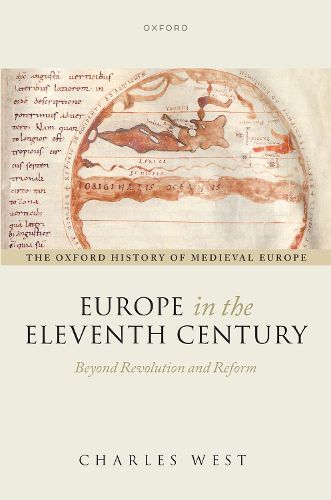Readings Newsletter
Become a Readings Member to make your shopping experience even easier.
Sign in or sign up for free!
You’re not far away from qualifying for FREE standard shipping within Australia
You’ve qualified for FREE standard shipping within Australia
The cart is loading…






Eleventh-century Europe was diverse and fast-changing. Historians have often debated this change through two sets of competing arguments, one about the shifting role of the Church and the Papacy, and the other about the rise of castellan lords and a proliferation in violence. Yet these arguments about 'Church Reform' and 'Feudal Revolution' only really apply to one part of Europe, the Latin West. This book takes its cue from contemporary perceptions of Europe, and includes Byzantium (or East Rome) and Muslim al-Andalus in scope. In doing so, it presents a new perspective on Europe in the period. Its chapters assess different scales of action and interaction within this wide space. They take from the reader from the peasants living in small village settlements, via the great city of Constantinople, the taifa emirates, kingdoms from Ireland to Hungary, and the two universal empires, up to contemporary ideas, cosmologies, and representations of the wider world. Viewed in this broad setting, the Latin West's remarkable expansion during this period, dramatically illustrated by the First Crusade at the century's end, can best be understood as the poorly controlled overspilling of internal dynamics, as the established public order was disrupted. Elsewhere in Europe, existing structures proved more resilient and better able to accommodate internal economic and social development, though remaining vulnerable to aggression from outside.
$9.00 standard shipping within Australia
FREE standard shipping within Australia for orders over $100.00
Express & International shipping calculated at checkout
Eleventh-century Europe was diverse and fast-changing. Historians have often debated this change through two sets of competing arguments, one about the shifting role of the Church and the Papacy, and the other about the rise of castellan lords and a proliferation in violence. Yet these arguments about 'Church Reform' and 'Feudal Revolution' only really apply to one part of Europe, the Latin West. This book takes its cue from contemporary perceptions of Europe, and includes Byzantium (or East Rome) and Muslim al-Andalus in scope. In doing so, it presents a new perspective on Europe in the period. Its chapters assess different scales of action and interaction within this wide space. They take from the reader from the peasants living in small village settlements, via the great city of Constantinople, the taifa emirates, kingdoms from Ireland to Hungary, and the two universal empires, up to contemporary ideas, cosmologies, and representations of the wider world. Viewed in this broad setting, the Latin West's remarkable expansion during this period, dramatically illustrated by the First Crusade at the century's end, can best be understood as the poorly controlled overspilling of internal dynamics, as the established public order was disrupted. Elsewhere in Europe, existing structures proved more resilient and better able to accommodate internal economic and social development, though remaining vulnerable to aggression from outside.